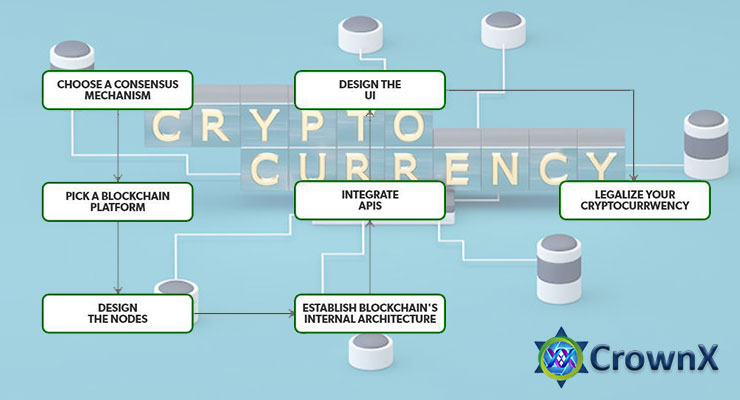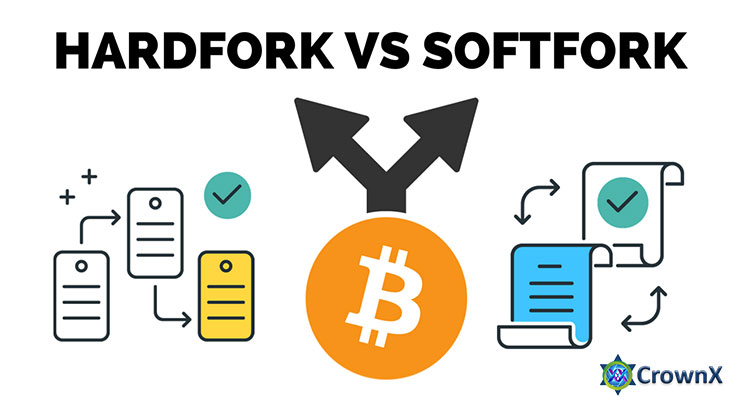
3 Paths to Crafting Your Cryptocurrency: Navigating the Creation Journey
With a clear vision and purpose in mind, you're poised to embark on the enchanting voyage of crafting your very own digital currency. Here, we unveil the three distinct avenues that lead to the creation of your cryptocurrency, each offering its unique challenges and rewards:
Modifying an Existing Chain (Forking):
In this path, you inherit the foundation of an established blockchain, shaping it to your vision. Forking an existing chain grants you a head start by leveraging existing functionalities and infrastructure. However, this approach demands a deep understanding of blockchain mechanics and coding prowess. By skillfully adapting and modifying an established chain, you can sculpt your cryptocurrency with precision.
Building on an Existing Blockchain:
Choosing this route entails embracing an existing layer-1 or layer-2 blockchain, capitalizing on its underlying structure and security. By developing your cryptocurrency as an extension of an established blockchain, you unlock an array of features and potential use cases. This approach requires a comprehensive understanding of the chosen blockchain's protocols and specifications, allowing you to tailor your creation to suit your objectives.
Creating a New Blockchain (Creating a Coin):
Venturing down the road of launching your own blockchain represents the pinnacle of creative autonomy. However, it's undeniably the most challenging endeavor, necessitating an arsenal of advanced coding skills and technical expertise. While online courses can be valuable companions on this quest, they may require pre-existing knowledge and might not delve deeply enough into the intricate realm of blockchain creation.
Each path is a gateway to manifesting your crypto dream. Yet, tread carefully. Assess your skill set, resources, and the level of commitment you're prepared to invest. Embrace the learning curve, hone your skills, and collaborate with experts to sculpt your cryptocurrency masterpiece. Remember, regardless of the route you choose, persistence, patience, and the pursuit of knowledge will be your steadfast companions as you breathe life into your digital creation.

Soft Fork vs. Hard Fork
Forking, in the context of blockchain technology and cryptocurrency, refers to the process of creating a new version of an existing blockchain by making modifications to its codebase. Think of it as a branching path that diverges from the original blockchain, allowing developers to introduce changes, improvements, or new features while retaining some of the foundational aspects of the original blockchain.
There are two main types of forks:
Hard Fork:
A hard fork involves significant changes to the protocol of a blockchain that render the new version incompatible with the old version. As a result, nodes running the old software will not be able to communicate or validate transactions with nodes running the new software. Hard forks often lead to the creation of a new cryptocurrency, separate from the original blockchain. Examples of hard forks include the creation of Bitcoin Cash (BCH) from the original Bitcoin (BTC) blockchain.
Soft Fork:
A soft fork, on the other hand, introduces backward-compatible changes to the blockchain's protocol. This means that nodes running the new software can still interact with nodes running the old software, but the new software may introduce additional rules or restrictions. Soft forks typically aim to enhance the existing blockchain's features or improve its efficiency. An example of a soft fork is the introduction of Segregated Witness (SegWit) on the Bitcoin network.
Forking is a way to evolve and innovate within the blockchain ecosystem. It allows developers to experiment with new ideas, fix bugs, improve scalability, or address security vulnerabilities. However, forks can also lead to community disagreements and fragmentation, as different groups may have differing opinions on the direction the blockchain should take. As a result, forking is a significant event in the life of a blockchain and often leads to the creation of a new cryptocurrency with its own distinct characteristics.

Layer-1 and Layer-2 Blockchains:
Layer-1 and Layer-2 Blockchains: Expanding the Horizons of Blockchain Scalability In the expansive realm of blockchain technology, the concepts of Layer-1 and Layer-2 blockchains play pivotal roles in shaping the efficiency, scalability, and functionality of decentralized systems.
Layer-1 Blockchain: Laying the Foundation
A Layer-1 blockchain represents the foundational layer of a blockchain network. It is the primary blockchain infrastructure that houses the core protocol, consensus mechanism, and underlying architecture. Notable examples include Bitcoin, Ethereum, and Solana. Layer-1 blockchains establish the fundamental rules of the network, determining how transactions are validated, data is stored, and security is maintained.
Layer-2 Blockchain: Scaling Solutions and Beyond
Layer-2 blockchains, on the other hand, operate as secondary solutions built atop Layer-1 blockchains. These solutions are designed to address the inherent scalability limitations of Layer-1 networks. By taking some of the processing load off the main chain, Layer-2 blockchains alleviate congestion and enhance transaction throughput. They achieve this by processing transactions off-chain and then settling the final results on the Layer-1 blockchain.
Layer-2 solutions come in various forms, such as:
Payment Channels: These allow for a series of off-chain transactions between participants, with only the final outcome being recorded on the main blockchain. The Lightning Network for Bitcoin is a prominent example of a payment channel network.
Sidechains: Sidechains are separate blockchains that are interoperable with the main chain. They enable specific use cases or applications to function independently while still benefiting from the security of the main chain. The RSK sidechain for Bitcoin is an illustration of this concept.
Plasma Chains: Plasma chains are another Layer-2 solution that involves creating smaller chains that are connected to the main blockchain. These chains can process transactions more quickly and efficiently, and the final results are periodically anchored to the main chain for security.
Layer-2 solutions are pivotal in enhancing scalability, reducing fees, and improving the user experience on blockchain networks. By providing a framework for off-chain computations and interactions, Layer-2 blockchains contribute to the evolution of blockchain technology, unlocking its potential for broader adoption and real-world applications.